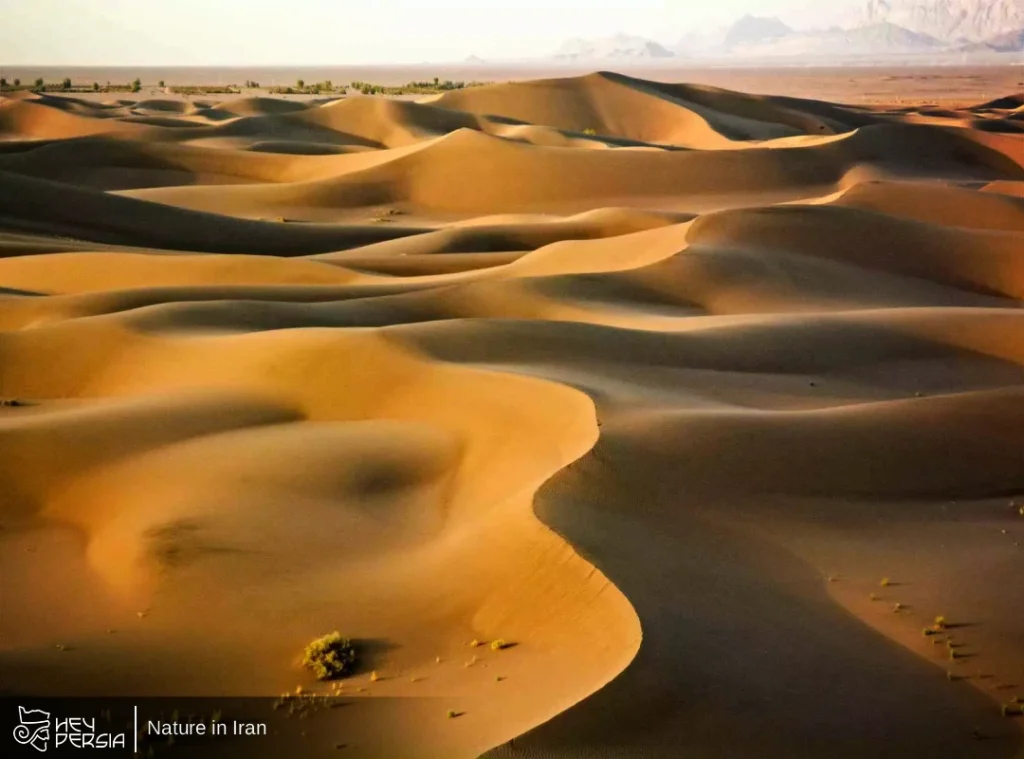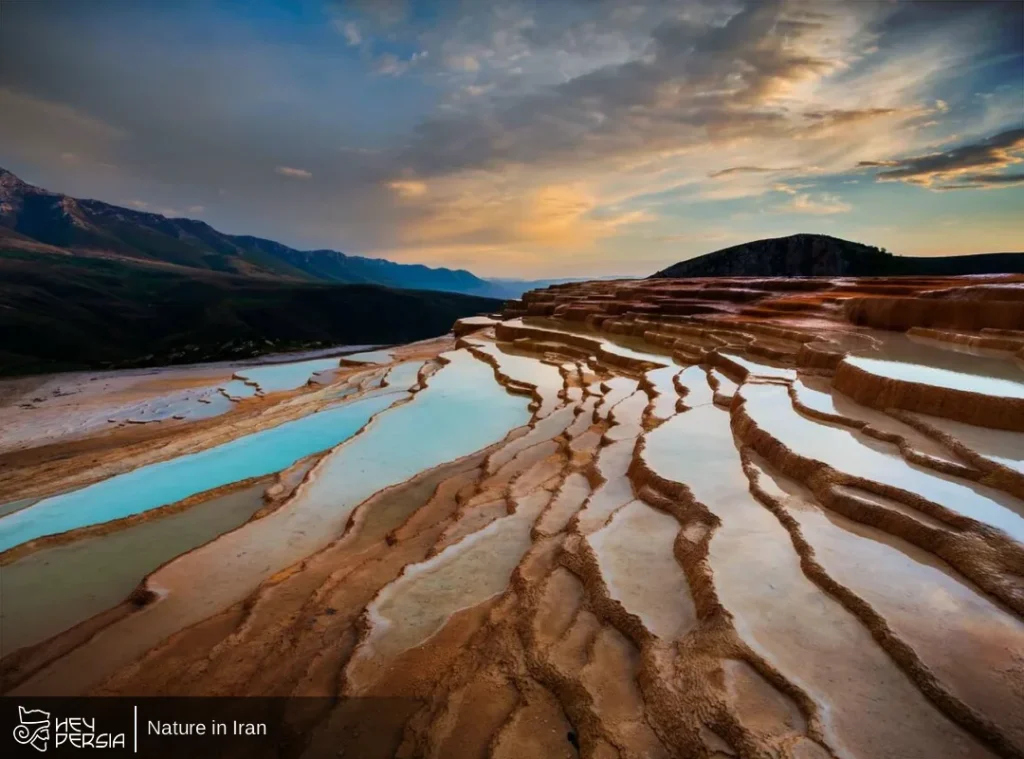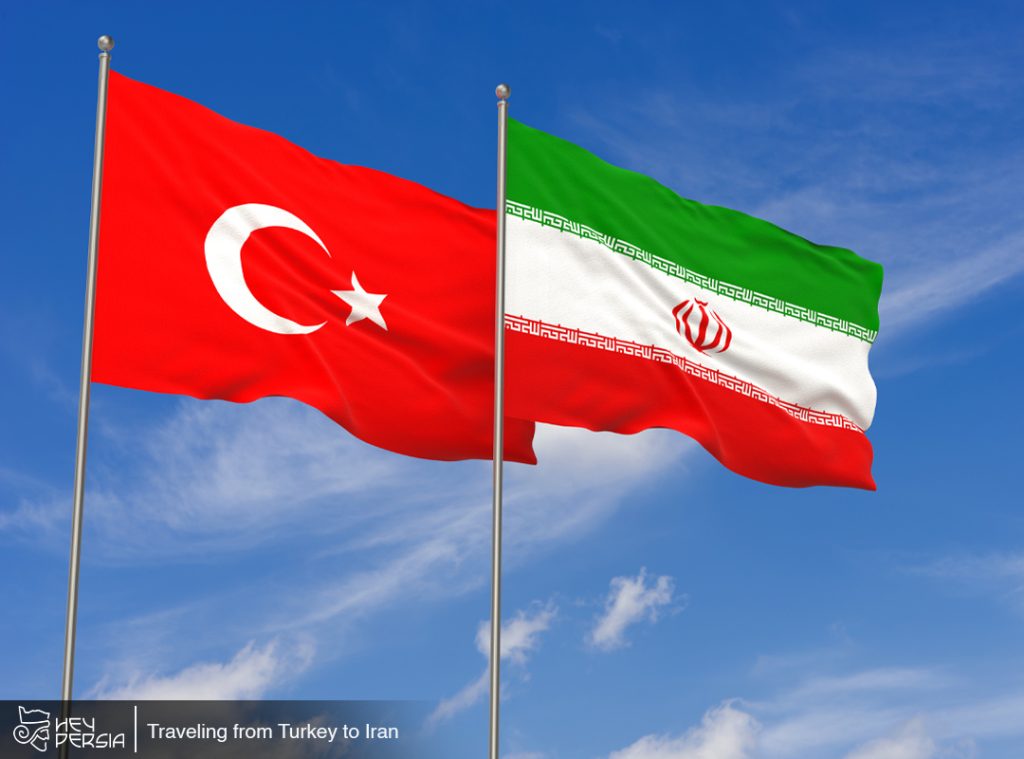When most people think of Iran, they imagine deserts and ancient cities. But the truth is far richer. Iran’s landscape stretches from the cool peaks of the Alborz Mountains to tropical coastlines along the Persian Gulf. In 2025, the country is putting a spotlight on eco-tourism, outdoor adventures. The national parks that show how diverse and breathtaking its environment really is. Whether you’re a hiker, a photographer, or simply a lover of wild nature, exploring nature in Iran will surprise you with contrasts — snowy peaks beside dry plains, salt lakes shining under the sun, and dense forests alive with rain and mist. Stay with Hey Persia to learn more.
Table of contents
- The Northern Mountains — Peaks, Valleys, and Clouds
- The Caspian Coast — Iran’s Green Paradise in Nature in Iran
- The Central Deserts — Silence and Stardust in Nature in Iran
- The Western Highlands — Nature and Nomads
- The Southern Coasts — Sunshine and Serenity
- Lakes and Salt Plains — The Hidden Gems of Nature in Iran
- Eco-Tourism and Sustainability in 2025
- Nature in Iran
The Northern Mountains — Peaks, Valleys, and Clouds

The north of Iran is dominated by the Alborz Mountain Range, which runs along the southern edge of the Caspian Sea. Its most famous peak is Mount Damavand, a snow-capped volcano that stands at 5,671 meters, making it the highest point in the Middle East.
Mount Damavand is a symbol of strength in Persian mythology, and for modern travelers, it’s a paradise for hiking and climbing. In summer, its slopes are filled with wildflowers and sheep pastures, while in winter, it becomes a destination for ski lovers.
Not far from Damavand, the town of Ramsar offers lush forests, mineral hot springs, and views where the mountains literally meet the sea. A cable car in Ramsar takes you from the beach to the mountain top in just 15 minutes — one of the most unique rides in the world.
The Caspian Coast — Iran’s Green Paradise in Nature in Iran
While most travelers imagine Iran as dry, the Caspian region in the north is humid and tropical. The provinces of Gilan and Mazandaran are covered with dense jungles and rice paddies that stretch to the horizon.
One of the most beautiful places here is the Hyrcanian Forest, a UNESCO World Heritage Site that has existed for more than 25 million years. These ancient forests are home to Persian leopards, wild cats, and hundreds of bird species.
Popular spots include:
- Masuleh Village: Built into a steep mountain, where the roof of one house is the courtyard of another.
- Chalous Road: A scenic highway connecting Tehran to the Caspian Sea — every turn offers a postcard view.
- Rasht: The capital of Gilan, known as Iran’s “City of Gastronomy” for its flavorful northern dishes.
The air here smells of rain, tea, and orange blossoms — a sensory contrast to the dry interior of the country.
The Central Deserts — Silence and Stardust in Nature in Iran

Few places in the world can match the spiritual calm of Iran’s deserts. The two main deserts — Dasht-e Kavir (the Great Salt Desert) and Dasht-e Lut (the Lut Desert) — cover much of central and eastern Iran.
The Lut Desert, a UNESCO World Heritage Site, is one of the hottest and driest places on Earth. NASA satellites recorded a surface temperature of 70.7°C here — the highest ever measured on the planet. Yet it’s not just heat that defines it. The desert is filled with otherworldly landscapes: wind-carved sand towers, salt flats that sparkle under the moonlight, and vast areas of absolute silence.
Adventure travelers can join desert tours departing from Kerman or Shahdad, where local guides organize 4×4 drives, stargazing nights, and camping in eco-lodges designed to blend with the environment.
In contrast, Dasht-e Kavir, stretching from Kashan to Semnan, offers milder conditions and salt lakes like Namak Lake that shimmer in the sun. The desert’s calm beauty and endless horizon make it a favorite for photographers.
The Western Highlands — Nature and Nomads
In the west, the Zagros Mountains form another dramatic landscape, extending through Kurdistan, Lorestan, and Chaharmahal-Bakhtiari provinces. Here, the air is cool and filled with the scent of wild herbs. Rivers cut through deep valleys, creating waterfalls and fertile fields.
This region is also home to Iran’s nomadic tribes, such as the Bakhtiari and Qashqai, who still migrate with their herds between summer and winter pastures. Travelers can stay in nomadic tents, learn traditional crafts, and experience a way of life that has survived for centuries in Nature in Iran.
Nature highlights include:
- Bisheh Waterfall: A powerful cascade in Lorestan surrounded by oak forests.
- Zarde Limeh Waterfall: Hidden deep in the mountains, accessible through scenic hiking trails.
- Oshtoran Kuh Range: A great destination for mountaineering and birdwatching.
The west offers a raw, untamed beauty that feels far removed from modern city life.
The Southern Coasts — Sunshine and Serenity

Moving south, Iran meets two bodies of water: the Persian Gulf and the Gulf of Oman. The coastline stretches for more than 2,400 kilometers and features tropical weather, coral reefs, and golden beaches.
Among the highlights are the islands of Kish and Qeshm, each with its own charm of Nature in Iran.
- Kish Island: Offers luxury resorts, diving centers, and clear blue water perfect for swimming.
- Qeshm Island: A UNESCO Global Geopark famous for its natural wonders like the Valley of Stars, Hara Mangrove Forests, and Chahkooh Canyon, whose red and yellow rocks glow at sunset.
The southern coast is also known for dolphin watching, traditional dhow sailing, and the unique culture of the Bandari people — recognized for their colorful dresses and rhythmic sea music.
Lakes and Salt Plains — The Hidden Gems of Nature in Iran
Iran’s lakes may not be as famous as its deserts, but they are equally spectacular.
- Lake Urmia: Once the largest saltwater lake in the Middle East, now under ecological restoration with renewed life and pink hues.
- Lake Maharloo: Known as the “Pink Lake of Shiraz,” where the water turns rose-colored due to natural minerals.
- Hoz Soltan Lake: Near Qom, it creates mirror-like reflections of the sky — ideal for photography.
These lakes, together with vast salt plains, create surreal landscapes that are drawing more eco-travelers and artists in 2025.
Eco-Tourism and Sustainability in 2025
Iran’s tourism industry is evolving. In 2025, more local companies are focusing on eco-friendly travel, offering sustainable tours that respect wildlife and reduce environmental impact. Desert lodges use solar power, and community-based projects employ locals as guides, cooks, and artisans. Nature in Iran offers even more.
Protected areas like Golestan National Park and Kavir National Park have improved facilities and stricter conservation policies to protect rare species. They are the Persian leopard and the Asiatic cheetah.
Responsible tourism in Iran is growing — travelers are encouraged to minimize plastic use, support local crafts, and respect the fragile desert and forest ecosystems.
Nature in Iran
From snowy volcanoes to sunburned dunes, the nature in Iran is a world of contrasts that few countries can match. Each region tells its own story — one of survival, beauty, and timeless harmony between people and the land.
Whether you’re trekking up Mount Damavand, walking through the misty Hyrcanian Forests, or camping under the stars of the Lut Desert, Iran offers more than scenery — it offers perspective. In 2025, this vast and varied landscape is ready to welcome travelers who seek adventure with respect, and who wish to see the planet at its most authentic.





